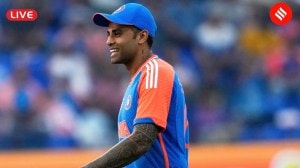Not welcome, voters tell Dharam Singh
Till recently not many imagined that former Karnataka chief minister Dharam Singh could be dislodged from his Jewarghi constituency in Gulbarga district.

Till recently not many imagined that former Karnataka chief minister Dharam Singh could be dislodged from his Jewarghi constituency in Gulbarga district. After all, he has had eight consecutive wins from here since 1972 and was now looking for a ninth one.
In 2004, Singh won with a margin of just 2,400 votes while in 1999 his margin was 1,950 votes. But the poll battle could be tougher this year.
A few days ago, three villages traditionally loyal to the Congress, didn’t even allow Singh to campaign, accusing him of having done little to develop his constituency. Anger against him, a strong farmer leader as rival and a sympathy wave for the BJP, could well topple Singh.
A visit to Balbatti village some 40 km from Gulbarga city throws up signs of things to come. On Sunday, Singh visited Balbatti that has around 2,000 voters, with an extra police escort and a pilot vehicle. The reason: Four days ago, villagers here lined the approach roads with stones and drove Singh away. Similar uprisings were reported in Mardi and Shivpur villages as well.
When he held a sabha in the largest house in the village, most villagers preferred to stay away and chew betel leaves in front of a temple instead. Ramegowda, a farmer from Bulbatti says, “Last time he said he would become CM if we voted for him and he did. But that has not done us any good. We refused to let him enter our village and turned him away.” Their village, says Ramegowda, has an acute water shortage and no roads.
Incidentally, in the Nanjundappa committee report, submitted during Veerappa Moily’s reign in Karnataka in 1996, Jewarghi was ranked 174 among the 177 backward talukas in the state.
With 2.05 lakh voters of all castes, dominated by Lingayats (Ghaniga), caste is not an important factor in the Jawargi constituency. In Jawargi, there are barely 100 voters from the Rajput community to which Singh belongs. A major reason for Singh’s success in the past, say voters, is because his reign is identified as being largely peaceful.
But a deep divide cuts across Singh’s birthplace Nilogi, a village with 3,000 voters. In the village, everyone has their own predictions. Rajanna, a local youth believes the Congress at best will manage around 40 per cent of the votes. “Little has been done here except for a couple of RCC roads. The old school where Singh studied, which is the polling station, is in ruins and was fixed up only two days ago for voting,” he says.
The fall in Singh’s popularity coincides with the rise of his rival, popular farmer leader and independent candidate Kedarlingayya Hirematt.
A man who lead several farmer agitations in the drought-prone Gulbarga, Hirematt lost face in the 1999 assembly elections when he reportedly gave up the poll race on the Congress’s request. “I thought I did the right thing 10 years ago but I was wrong. The farmers know what I am capable of and my campaign is running smoothly,” says Hirematt.
Meanwhile, in Adrami town, which has about 9,000 voters, the BJP’s star campaigner and chief ministerial candidate B.S. Yediurappa holds a public meeting to a packed audience. The BJP candidate against Singh, Dodappa Gowda, is the son of the late Shivlingappa Gowda, who contested against Singh in the last three elections. But Singh doesn’t appear to be unduly disturbed by these combined challenges. He visited his constituency for the first time since 2004 only this May and his campaign includes a 10 or 15-minute visit to the 148 villages in Jewarghi. And in Balbatti, Singh chose to speak to TV channels and not villagers.
The voters are now returning the favour.





- 01
- 02
- 03
- 04
- 05

























